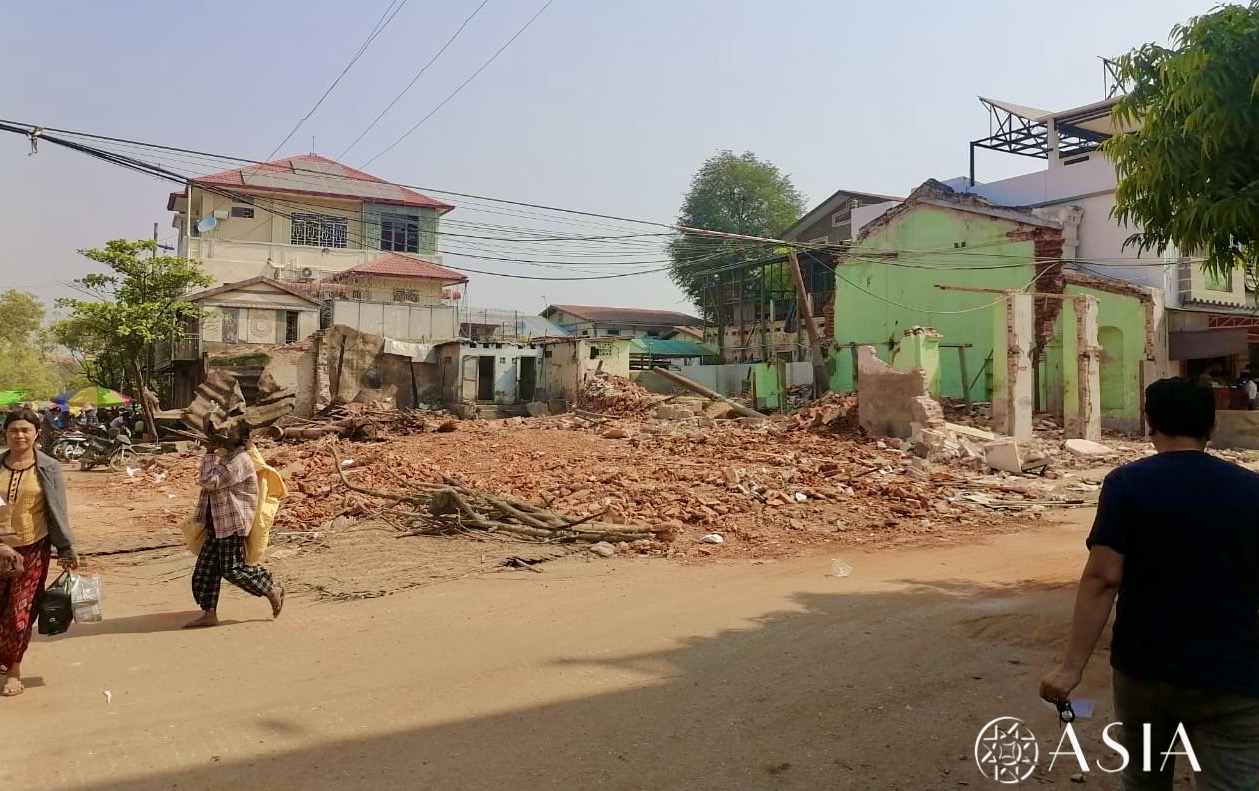In the weeks following the violent earthquake in Myanmar, a familiar narrative has resurfaced among those working in international cooperation: the idea that emergency interventions are episodic, costly and driven by emotion. A detour, in short, that distracts from the real path: systemic change. But what if we flipped that narrative? What if, at times, it is precisely the emergency that allows the system to reveal itself, and transform?
Challenging the emergency narrative
Emergency interventions are often seen as episodic, ineffective, costly, and difficult to measure. For this reason, structural and long-term efforts are generally preferred. Priority tends to be given to interventions whose effectiveness can be quantified—for example, in terms of lives saved or years of improved life per dollar spent. According to these criteria, emergency aid is often considered less measurable and less effective than structured programs, such as those in health or education.
This is a legitimate view, grounded in solid economic and quantitative reasoning. However, it risks overlooking what an emergency can reveal: the deep fractures within a system. An earthquake is not merely an isolated event—especially in socio-politically unstable contexts—but rather an amplifier of inequality, a spotlight on infrastructural shortcomings, and a revealer of hidden vulnerabilities. And if observed through a strategic lens, it can become a window of opportunity to spark systemic change.
John Kingdon’s theory of policy windows explains this mechanism well: a visible problem, a ready solution, and a receptive political context must align in order to open a window for meaningful intervention. Often, following major disasters, emergency management policies undergo structural change precisely because of these windows of opportunity. A crisis response can become a driver of deep transformation—if it is not treated as an isolated act, but as part of a broader strategic vision. From this perspective, an emergency is not a chapter to close, but a critical turning point.
This vision is supported by the literature on the COVID-19 shock. In 2021, a study published in the Journal of Social Policy noted that the pandemic opened windows of opportunity to discuss inclusive health policies and improve living conditions, showing how emergencies can drive a shift toward a more equitable new normal. Similarly, after the Ebola crisis in post-2014 Guinea, an analysis in Global Health Systems showed that an opportunity emerged to strengthen health systems—provided there were activists and “policy entrepreneurs” able to keep that window open.
These examples point to a constant: it is not the event itself, but what is done in the critical moment that matters. This means that, in times of emergency, action must be grounded in contextual knowledge, must build trust, and must look toward the future. Crises are not exceptions, and development is not the norm; resilience begins with crisis.
Moving from theory to practice, what does it mean to act in an emergency with a systemic mindset? It means placing communities at the center, involving them in decision-making processes from the very beginning; it means integrating immediate response with medium- and long-term goals; it means adopting metrics that measure not only how much aid has been delivered, but how much it has strengthened the communities’ capacity to adapt.
The power of the triple nexus
To fully grasp the deep connection between emergency response and systemic change, we must introduce the concept of the triple nexus, namely the intersection of humanitarian action, development, and peace. This theory encourages us not to work in separate phases—first saving lives, then rebuilding, then fostering peace—but to act with a simultaneous vision, focusing on collective outcomes and integrated agendas.
The OECD Development Assistance Committee offers the following definition:
«the triple nexus refers to the interlinkages between humanitarian, development, and peace actions. […] It aims to strengthen collaboration, coherence, and complementarity […] to reduce vulnerabilities, improve risk management, and address the root causes of conflict».
This alignment of intentions marks a significant shift: the emergency is not merely the first step, but a piece that strengthens all the others. From an operational standpoint, it requires strong coordination (including with local actors), flexible and multi-year funding, up-to-date conflict analysis and a synergistic effort that holds together the short, medium, and long term. It also demands a delicate balance: maintaining humanitarian neutrality, avoiding the politicization of aid, and ensuring consistency in timing and operational methods.
Rebuilding homes after an earthquake is not an end in itself, but a step toward constructing more resilient infrastructure. Providing access to clean water today means strengthening community water systems that can withstand future crises. Each intervention can become a bridge between a troubled present and a more sustainable future.
A crisis that calls for vision

On March 28, 2025, an earthquake struck Myanmar, causing thousands of deaths, injuries, and new displacements, in addition to devastating damage to the country’s vital infrastructure. What makes it worse is that the force of the quake hit a context already deeply affected by political instability, social inequality,and widespread poverty. The Burmese people are in extremely dire conditions.
In response to this emergency, ASIA Onlus—active in the country for the past 10 years and deeply familiar with the local context—has launched a comprehensive intervention that includes:
- the securing and reconstruction of 28 schools;
- the construction of new water systems and wells to ensure safe access to clean water;
- the distribution of seeds, farming tools, and training to promote agricultural self-sufficiency;
- direct support for affected families and local communities.
The Italian Buddhist Union and Wisedāna Foundation have launched a fundraising campaign to support this effort, not as an isolated gesture, but as part of a broader vision: transforming urgency into an opportunity for resilience.
Our method: coherence in every context
Acting in an emergency setting does not mean departing from our approach, it means applying it with even greater awareness. At Wisedāna Foundation, we work to generate systemic impact: an impact that goes beyond responding to immediate needs, aiming instead to help transform the conditions that produce vulnerability.
Even when a call to action arises from an unexpected crisis, we remain grounded in the principles that guide our work:
- trust in local actors, who understand the context and know what is truly needed;
- an integrated vision that connects present and future, emergency response and long-term recovery;
- strategic alliances that allow us to act effectively even where we are not directly present.
Working alongside ASIA Onlus in Myanmar is part of our commitment: we support those who are already working in the field with competence, responsibility and a long-term perspective. This intervention in Myanmar—urgent as it is—allows us to remain true to our vision. Because conscious philanthropy knows how to navigate complexity without losing direction, and how to carefully choose the actions that open the way to the future.
An invitation to shared responsibility

We cannot predict when the next crisis will strike. But we can choose, every time, how to respond. We can decide whether to simply patch up emergencies, or to try transforming, from within them, the systems that make those emergencies so deep.
Through this campaign, Wisedāna Foundation and UBI invite you to make a concrete act of wise generosity: supporting ASIA Onlus’s intervention in Myanmar means not only offering immediate aid, but also contributing to a thoughtful process of reconstruction, designed for and with local communities, and oriented toward the future.
It is in moments of greatest vulnerability that we can create the most authentic change.
Written by Beatrice Marzi and Marta Turchetta
Edited by Marta Turchetta
Photo by Remi Walle on Unsplash



